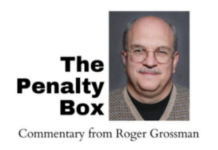
Whitney Downard
Indiana Capital Chronicle
WARSAW — Thousands more Hoosiers left the state’s Medicaid rolls during the second month of “unwinding” federal protections, according to the latest report from the Centers for Medicare and Medicaid Services.
More than 53,600 Hoosiers lost their government insurance coverage in May in addition to the nearly 53,000 who lost coverage in April.
Of the 165,431 Hoosiers up for renewal in May, nearly 40% were renewed; another 6% were no longer eligible; 27% were dropped for procedural reasons; and the renewal process for the remaining 28% is pending. Percentages are rounded.
Roughly 82% of Hoosiers whose coverage lapsed lost Medicaid due to procedural reasons, such as an incomplete form, a decrease from nearly 89% the month before.
Though more Hoosiers were up for renewal in May compared to April, the number who kept their insurance remained relatively flat, at 65,092 in April and 65,882 in May.
The 91,000 combined Hoosiers who fell off of the Medicaid rolls due to procedural reasons have 90 days to finalize paperwork and may even qualify for retroactive coverage. However, state policy doesn’t permit Hoosiers under the Healthy Indiana Plan to be retroactively covered.
Previously, the state estimated that between 300,000 and 400,000 Hoosiers could lose their coverage over the entire period but if dis-enrollment rates from the first two months hold that number could be much higher — closer to 600,000.
Hoosiers whose coverage lapsed or who have questions about their eligibility in the coming months should contact the Family & Social Services Administration (FSSA). To learn more, visit the FSSA Medicaid website.
A nationwide process
During the COVID-19 Public Health Emergency, the federal government offered a boost to Medicaid payments in exchange for states giving every recipient continuous coverage, regardless of income changes. Medicaid agencies like FSSA saw their budgets swell and simultaneously saved money with less administrative burdens.
At the same time, the growth of state Medicaid rolls surged. In Indiana alone, the number of Hoosiers using the government insurance program grew from 1.4 million prior to the pandemic to more than 2.2 million in April.

Following the expiration of the COVID-19 Public Health Emergency, states began the “unwinding” process, where agencies redetermined eligibility for hundreds of thousands of enrollees.
In the first month, half a million Americans lost coverage across 11 states, including Indiana. Florida accounted for roughly half of the decrease, but Indiana — tied with Arkansas — had the highest disenrollment rate for procedural reasons.
Indiana’s performance relative to other states improved in the most recent analysis from June 16. But the state still reported a higher disenrollment rate for procedural reasons than the national average, of 74%.
However, the majority of states started their “unwinding” process after Indiana, which was one of 19 states whose review began in May or earlier. Another 22 states began in June and nine more will start in July. One state, Oregon, won’t begin its process until October.
KFF estimates that between 17 and 24 million people nationwide could fall off the Medicaid rolls. Another study from the nonprofit found that a majority of recipients had no idea about the renewal process, especially Black recipients.
Actions in Indiana
FSSA has attempted to combat this discrepancy through a series of actions, including a collaboration with Black churches to promote and educate.
Michele Holtkamp, the director of communications for FSSA, noted the procedural terminations can include someone losing coverage because they died, moved out of state or were incarcerated. Some who don’t finish their forms could know they no longer qualify and abandon the process or voluntarily withdraw for other reasons.
“We are taking multiple steps to try to reach people. In addition to our statewide advertising campaign, we continue engaging with stakeholders in communities across the state weekly to help them work directly with Hoosiers. We continue to text and call members at risk of losing coverage, and partner with the managed care entities and hospitals to help them understand who is at risk so they can help,” she said.
Holtkamp urged Medicaid beneficiaries to contact FSSA’s Division of Family Resources and update their information. Additionally, some children may remain eligible even if their parents no longer qualify.
“We continue to be deeply concerned about the high rate of Medicaid dis-enrollments impacting Hoosier kids and families, and hope that FSSA will use every tool at their disposal, including those recently made available by CMS, to reduce unnecessary healthcare coverage loss. Because so many Hoosier families and the majority of Hoosier kids rely on Medicaid to fill prescriptions and get the care they need, it’s essential that Hoosiers come together across race and place to push for a Medicaid system that keeps as many of us as possible covered,” Hutchings-Goetz said in a statement.
The federal government details the “unwinding” process suggestions Indiana participates in to limit the number of procedural dis-enrollments, including collaborating with the Postal Service and ex parte, or automatic, renewals for select populations.
* * *
The Indiana Capital Chronicle is an independent, nonprofit news organization dedicated to giving Hoosiers a comprehensive look inside state government, policy and elections. The site combines daily coverage with in-depth scrutiny, political awareness and insightful commentary.
You can read the original version of the story here.




